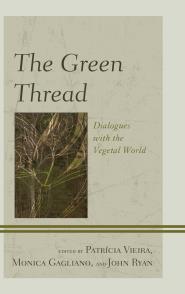
Just for backup reason a summary of my Twitter messages. It is always a nice way to re-experience the developments of a certain time period. For this reason my most important Twitter messages from April 2016 until June 2016. Read more...
Categories: Design, english, Gedanken, Generative Art, Interaction, Plants, Programming, Technologie Tags: art, books, cool stuff, Design, Games, information design, inspiration, interface design, JavaScript, library, nature, netzwerk, physical computing, Programming, publications, research, streaming, tutorials, video, web

Just for backup reason a summary of my Twitter messages. It is always a nice way to reexperience the developments of a certain time period. For this reason my most important Twitter messages from September 2015 until March 2016. Read more...
Categories: Design, english, Games, Generative Art, Interaction, Plants, Programming, Technologie Tags: art, books, cool stuff, Design, image processing, information design, inspiration, JavaScript, Konzept, netzwerk, physical computing, prototyping, research, tools, tutorials, video, web service

Just for backup reason a summary of my Twitter messages. It is always a nice way to reexperience the developments of a certain time period. For this reason my most important Twitter messages from June 2015 until August 2015. Read more...
Categories: Allgemein, Design, english, Generative Art, Interaction, Programming, Technologie Tags: art, cool stuff, Design, flash, flex, Games, image processing, information design, inspiration, Interaction, interface design, JavaScript, Konzept, physical computing, Programming, prototyping, publications, research, streaming, talks, tracking, tutorials, video, web design

Just for backup reason a summary of my Twitter messages. It is always a nice way to reexperience the developments of a certain time period. For this reason my most important Twitter messages from January 2015 until March 2015. Read more...
Categories: Allgemein, Design, english, Games, Generative Art, Interaction, mobile, Plants, Programming, Technologie Tags: art, cool stuff, Design, flash, flex, Games, information design, inspiration, Interaction, interface design, JavaScript, nature, physical computing, Programming, prototyping, research, tutorials, video, web

Im Anfang Mai 2015 lud mich Myriel Milicevic für eine Gastvorlesung und anschließendem Workshop für Ihren Kurs Interfacing with Nature an der Hochschule Potsdam ein. Mein Themengebiet für diesen Tag waren die Artistic Human Plant Interfaces/Elektrobotanik. In der 90-120min Einführung bekamen die Studenten aus den Bereichen Produkt Design, Interface Design und Kommunikationsdesign einen ersten Eindruck, welche Überschneidungen zwischen Menschen und Pflanzen, sowie zwischen Pflanzen und Technologie auftauchen.
Read more...
Some findings of my master thesis about biosensing are published in the new book:
The Green Thread: Dialogues with the Vegetal World

Edited by Patrícia Vieira; Monica Gagliano and John Ryan
Together with Christa Sommerer and Laurent Mignonneau, we wrote the chapter 13 The Art of Human to Plant Interaction. If you want to see videos of these featured Human Plant Interaction, please check: Biosensing for Human Computer Interactions
Please feel free to post your Feedback about our chapter!
Read more...
Categories: english, Interaction, Plants, Technologie Tags: art, books, inspiration, Interaction, nature, physical computing, publications, research, studium
For almost more than a year I wanted to write a tutorial about how to create a speaker on a leaf. Unfortunately, I found no time to write one. I think it is now time to show you the video as an example and provide you the links for built your own leaf speaker
After the analysis of “Visualizing techniques with plants”, we will explore interactions for human computer interaction (HCI) through plants. The objectives of this research are revealing technical approaches and which kind of interaction can be performed.
Interactions between humans and computer is usually implemented by sensors. In 2009 Dan Saffer defined a sensor for human computer interaction like this:
A sensor is typically an electrical or electronic component whose job is to detect changes in the environment [Saffer2009, page 13].
We are surrounded by plants and plants are able to sense changes in our environment. The increasing problem with our environment forces us to reconsider our usage of technology. Hybrid solutions between natural resources and our current technology is able to decrease our current environmental issues [ICC2007, pages 15-21]. For this reason, it is obvious to explore the plant abilities of sensing for HCI. The sensor belongs to the basic components of any gestural system, which is used in HCI applications [Saffer2009, page 13]. In our context we replace the common electronic sensor with a plant. An additional electronic circuit translates these bio signals into electronic computer-readable signals. Accordingly to this approach, the gestural system is completed again. Read more...
Nowadays information becomes more pervasive and crucial in a knowledge-based society [ZhaoMoere2008]. Therefore it is important for a society to develop an easy access to communicate meaning and functionality of information [MoereOffenhuber2009]. The easiest information access exists in our natural everyday physical environment. Public screens attempt to address this task. Unfortunately, current public screens hold several disadvantages for our public environment. They need a dedicated flat surface, illuminating their surrounded environments, and address only the visual sense. Furthermore, people often associate public screens with advertisement and pay less attention to them [MoereOffenhuber2009]. Therefore, it is rational to investigate information displays beyond the traditional screen-based visualizations. Plants are one of these objects, which are omnipresent in our daily physical environment. For this reason, data sculptures with plants might be an alternative approach to solve the problems of public screens and reach wide audiences. The following artworks are interpreted as the next development steps of the contemporary plant-based artworks from chapter 2.3 “Ethnobotany”. In this stage electronic and digital technology is applied to plants.
Within the scope of my research I will present a qualitative evaluation of visualizing techniques with plants. The evaluation model is based on the comparison methods developed by Andrew Vande Moere, Dietmar Offenhuber [MoereOffenhuber2009], and as well as Matthew Brehmer, and Tamara Munzner (2013) [BrehmerMunzer]. The evaluation result reveals their visual encoding techniques, and which characteristic of data they visualize. Furthermore, the outcome assigns approaches of creating more intriguing, and easy memorable visualizations. Read more...

Humans use their knowledge about plants and their ecology for enhancing their life quality. Their accomplishments related to plant cultivation is associated to the botany discipline horticulture. That includes activities from the fields of science, technology, and business. Horticulture incorporates the tasks and services of food production, plant conservation, horticulture therapy, landscape restoration, landscape and garden design. All the human endeavours towards horticulture serve the goal of developing and maintaining human health and well-being.
Horticulture is strongly connected with gardening and should not be distinguished with agriculture. Agriculture is usually organized in large fields that grow only one plant species (mono culture). Furthermore, gardens are in most cases isolated from its environment. A common field is not protected by a fence or other construction. Moreover, agriculture makes heavy use of big machines for cultivating their plant growth and food production. The last and another important difference between horticulture and agriculture is the lack of an appealing design practice in agriculture [Nemitz2000, page 173]. Read more...



